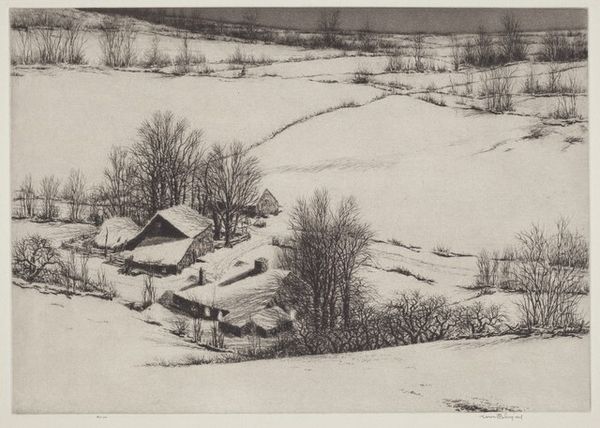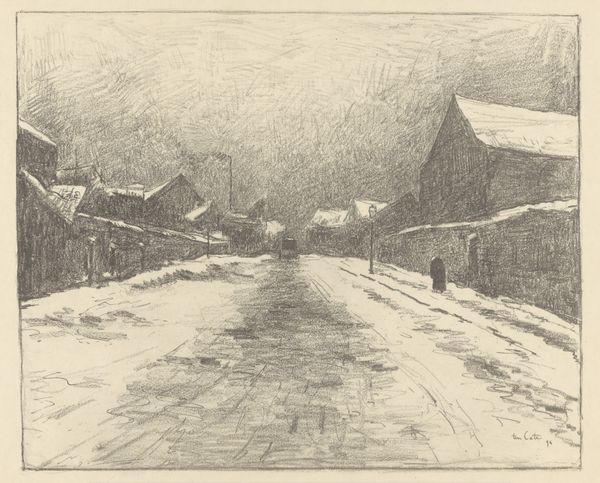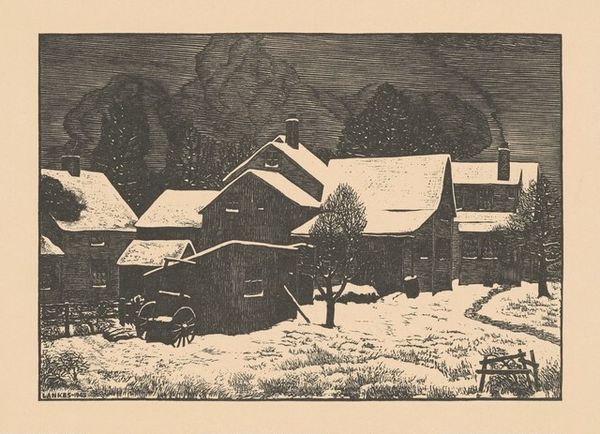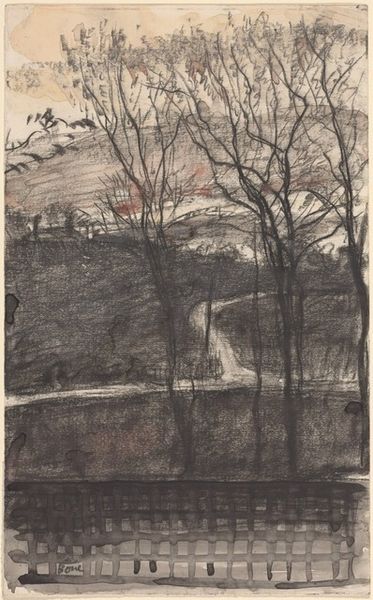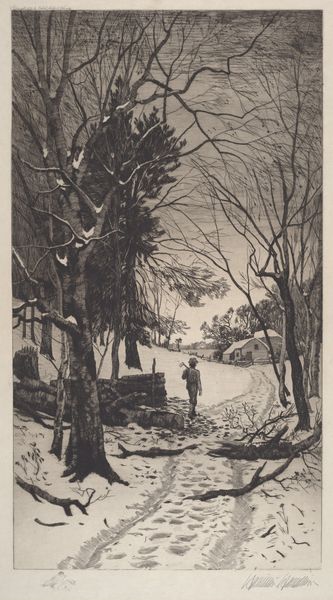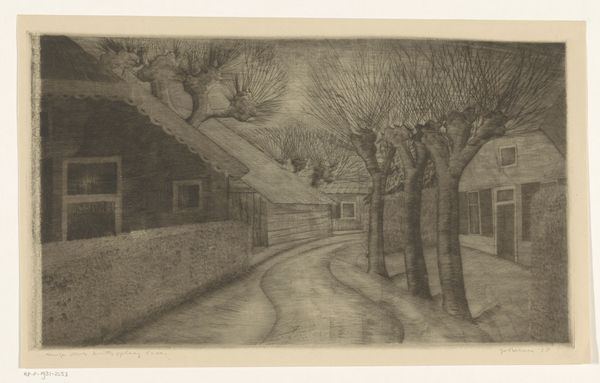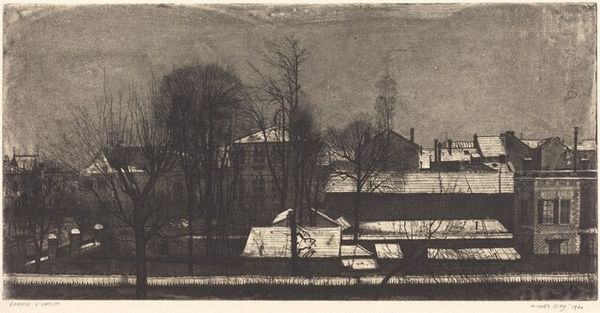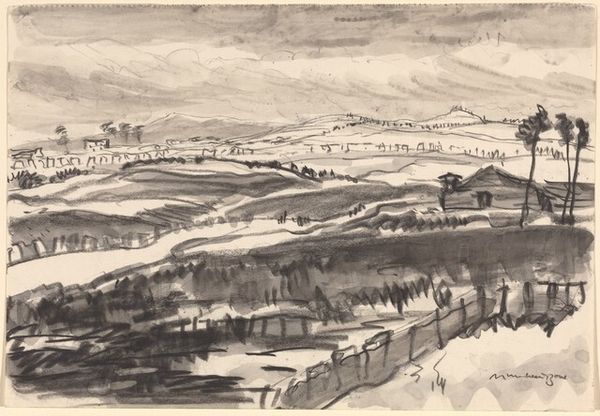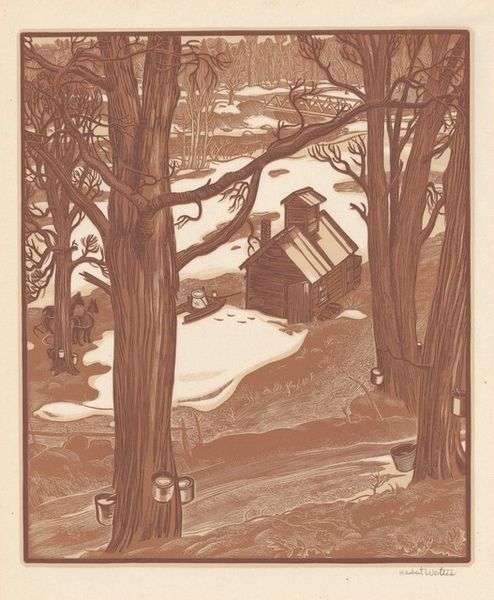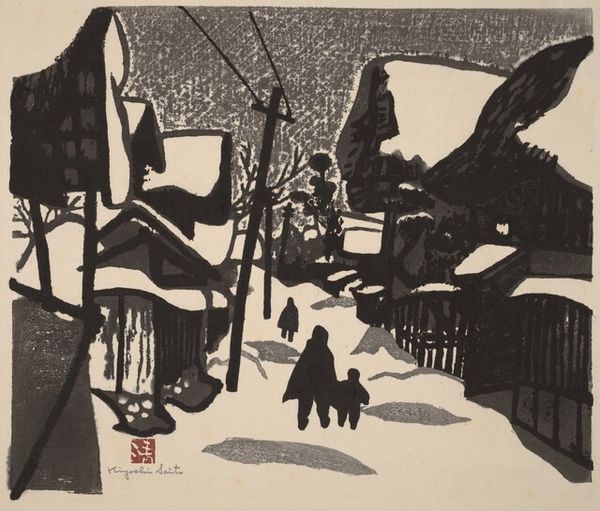
print, etching
# print
#
etching
#
landscape
#
surrealism
#
cityscape
#
modernism
#
realism
Dimensions: image: 25.2 × 42.7 cm (9 15/16 × 16 13/16 in.) sheet: 32 × 50.2 cm (12 5/8 × 19 3/4 in.)
Copyright: National Gallery of Art: CC0 1.0
Curator: We're looking at "Lost Railroad," an etching made in 1933 by the American artist Martin Lewis. Editor: Immediately, the stark winter scene evokes a sense of isolation. The skeletal trees and the monochrome palette give it a somber feel. Curator: Absolutely. Lewis was deeply interested in the changing American landscape, particularly the encroachment of modernity on rural life during the Depression era. You see the automobile juxtaposed against the stillness of nature. It speaks volumes about this transition. Editor: The car almost looks out of place, doesn't it? As if it stumbled into a memory, or perhaps a dream. Notice how the dark railway bridge looms above, a symbol itself of transition, progress, and even abandonment depending on how you read it. The trees clustered with birds, look ominous too. Curator: Lewis had a real talent for capturing atmosphere through light and shadow. This was influenced by his experiences in New York City but found in landscapes across America. The Great Depression cast a long shadow, not just on the economy but on the nation's psyche. Editor: Precisely. The stark contrast heightens that feeling, the bleakness almost mirroring the economic hardship. Even the barren trees—often symbolic of death and renewal—lend weight to that mood. It makes me wonder if there’s a specific commentary intended here. Curator: It’s fascinating how many artists of that period explored the tension between progress and stagnation. Lewis, like others, was concerned with what was lost. This image asks the question of what cost modern comforts have in our past. Editor: It all coalesces to create a sense of being caught between eras, an unsettling harmony that speaks to something bigger, don’t you think? The railroad a connection to elsewhere or, to be poetic, some potential new horizon and new self, forever unavailable. Curator: The print's power lies in its ability to tap into universal anxieties about progress and loss, presented as one small car driving a road we ourselves travel to get to this museum and look back. Editor: Agreed. And how the simple image becomes more than a scene – more a vessel, pregnant with the weight of the collective imagination.
Comments
No comments
Be the first to comment and join the conversation on the ultimate creative platform.
